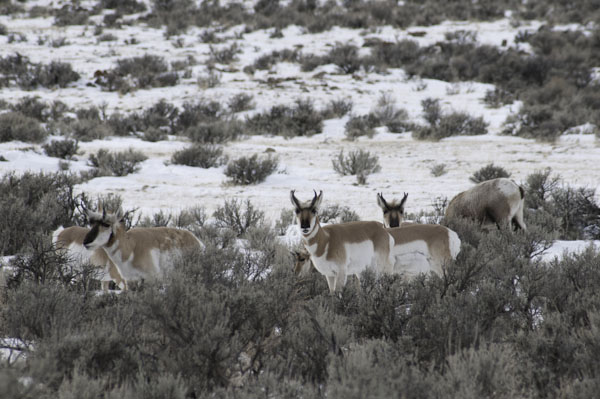sagebrush
-
For sagebrush and science geeks, USGS is hosting a series of webinars on sagebrush issues starting at the end of January Dates and Topics: 1/30 – Greater sage-grouse 2/6 – Invasive species, restoration effectiveness, and monitoring 2/20 – Monitoring, pinyon-juniper, and fuels management 2/27 – Fire, fuels management, invasive species 3/6 – Climate, carbon, and more…
-
Longtime habitat management techniques don’t stimulate vegetation growth in one sagebrush subspecies and may have detrimental effects on sage grouse and sagebrush-reliant songbirds, several studies show. The subtitle could be “No Sh#t Sherlock”. ts always nice when science is heard. For decades virtually all sage grouse experts were against killing sagebrush for sage grouse. The…
-
One of the common myths perpetuated by the livestock industry is that fire supression has allowed juniper to increase across the West, though under natural conditions juniper has long fire rotations of hundreds of years, so not significantly impacted by fire supression. Some studies suggest juniper expansion may be a natural consequence of climate change.…
-
The sagebrush steppe dominates the drier parts of the West, including parts of Southeast Oregon, much of Nevada, southern Idaho, western Wyoming, western Colorado, western Utah, and parts of New Mexico. Sagebrush steppe covers 165 million acres of the West. Due to many factors, including farming, ranching, subdivisions, and, most importantly, range fires, sagebrush vegetation…
-
An important question regarding sagebrush ecosystems, and species that rely upon them like sage grouse has to do with exactly what constitutes the fire rotation in sagebrush habitat? And a corrolary question is do current fire management policies emulate these historical conditions? William Baker’s paper, Scaling Landscape Fire History: Wildfires Not Historically Frequent in the…
-
Prime pygmy rabbit sagebrush habitat along the Big Lost River where I lived while working for the Challis National Forest. Photo George Wuerthner Years ago, I worked on the Challis National Forest and lived along the Big Lost River in Central Idaho. One of my favorite winter activities was skiing through the big sagebrush…
-
Livestock grazing in the Great Basin has increased cheatgrass, a highly flammable annual grass. Livestock advocates allege targeted grazing can reduce large wildfires. Photo George Wuerthner A recent publication in the Journal of Rangeland Ecology and Management, “Evaluating the efficacy of targeted cattle grazing for fuel break creation and maintenance,” perpetuates the myth that livestock…
-
No chance of fires here–remove all vegetation and your problem with wildfire is solved. Photo George Wuerthner A recent article in the Capitol Press titled: “New game plan: How targeted grazing on public lands is changing” describes how targeted grazing can fix any problems on public lands. Not unlike how logging is often described…




